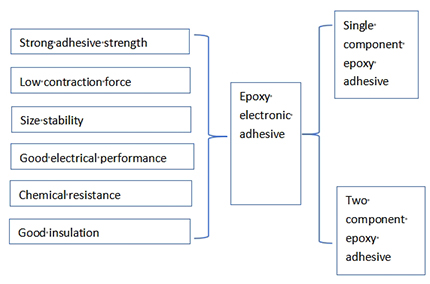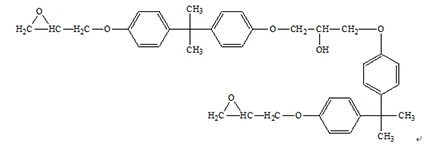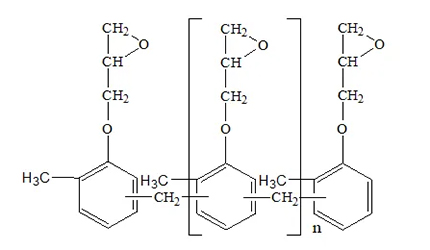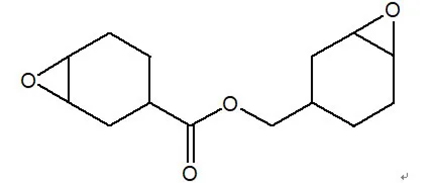With the increasing market size of the electronics industry and the continuous expansion of application areas, epoxy adhesive plays an important role, especially in the field of electronic components! Epoxy electronic adhesives play an important role in the field of electronic adhesives due to their excellent adhesion, dielectric properties, insulation, heat shrinkage, and chemical resistance.

In today's rapidly developing era of electronics and information technology, epoxy electronic adhesives are almost ubiquitous in our daily lives. From the packaging of on-board chips in electronic watches, mobile phones, computers, and car navigation systems, to the bonding and sealing of components in digital cameras, game consoles, televisions, and refrigerators, and to the packaging of motors, capacitors, inductors, and speakers, epoxy electronic adhesives play a crucial role in areas that we can or cannot see.
Epoxy electronic adhesive is a general term for adhesives used in the field of electronic and electrical appliances based on epoxy resin. It mainly consists of epoxy resin, curing agent, curing promoter, filler, toughening agent, coupling agent, etc. According to the packaging form, it can be divided into single component epoxy adhesive and two-component epoxy adhesive.
The following is an introduction to the composition of epoxy electronic adhesive:
The commonly used epoxy resin is bisphenol A epoxy resin (DGEBA), which has good strength, heat resistance, flexibility, chemical resistance, and adhesion.

Structural formula of bisphenol A epoxy resin (DGEBA)
In addition, bisphenol F epoxy resin (DGEBF) is also a commonly used epoxy resin for epoxy electronic adhesives. Its viscosity is much lower than bisphenol A epoxy resin, and it has good wetting properties and excellent processability, making it suitable for low viscosity requirements.

Structural formula of bisphenol F epoxy resin (DGEBF)
Multi functional group thermoplastic phenolic epoxy resin, such as ortho cresol epoxy resin, has the characteristics of fast curing speed, high crosslinking density, chemical stability, heat aging resistance, and good thermal resistance (including thermal deformation temperature). It is commonly used as impregnation material for laminated circuit boards and electronic component packaging.

ECN resin
The structural formula of ortho cresol formaldehyde epoxy resin (ECN)
Alicyclic epoxy resin is also commonly used in epoxy electronic adhesives. Due to its compact chemical structure, the cured product has a high thermal deformation temperature, stable dielectric constant at high temperatures, low loss factor, good arc and weather resistance, and good leakage trace resistance. One of the more common examples is 3,4-epoxycyclohexylmethyl 3,4-epoxycyclohexylformate (2021P).

Structural formula of 3,4-epoxycyclohexyl methyl 3,4-epoxycyclohexyl formate (2021P)
Curing agent is an indispensable and important component in can coating epoxy resin adhesives. Under the action of curing agent, epoxy resin solidifies and transforms into macromolecules with cross-linked structure, which in turn affects the mechanical properties, thermal stability, and chemical stability of epoxy cured products. Therefore, the performance of epoxy resin cured products largely depends on the curing agent.
In two-component epoxy electronic adhesives, anhydride curing agents and amine curing agents are commonly used, including methyltetrahydrophthalic anhydride, methylhexahydrophthalic anhydride, adipic anhydride, diaminodiphenylmethane, isophorone diamine, etc. Currently, the system is relatively mature. Single component epoxy electronic adhesive is currently a hot topic in electronic adhesive research, and the selection of latent curing agents is the key to affecting the product's application performance. Common latent curing agents include dicyandiamide and its derivatives, modified amines, modified imidazole, etc. Boron trifluoride amine complexes and organic acid hydrazides are also commonly used.
In recent years, cationic initiators such as hexafluoroantimonate and hexafluorophosphate have emerged as curing agents, playing an important role in latent curing agents.
In applications such as bonding, coating, and potting, it is often necessary to end the curing reaction as soon as possible or reduce the curing temperature. At this point, relevant curing reaction promoters must be added to the resin composition to accelerate the reaction between the curing agent and the epoxy group.
In single component epoxy electronic adhesives, imidazole curing accelerators are commonly used, including 2-ethyl-4-methylimidazole, 2-ethylimidazole, 2-propylimidazole, and C7-C17 long-chain alkyl substituted imidazole. When using dicyandiamide as a curing agent, acetylacetone metal salts, substituted ureas, and carbamoyl substituted imidazole curing accelerators are used. Two component epoxy electronic adhesive will use tertiary amine curing agents such as DMP-30, triethanolamine, etc.
The cured specialty epoxy resins have a high cross-linking density, high internal stress, and therefore has disadvantages such as brittleness, fatigue resistance, heat resistance, and poor impact toughness. These are the main problems of epoxy resin adhesive, which is difficult to meet the requirements of engineering technology and restricts its prospects as a structural material. At present, the main method to address the issue of epoxy resin is to improve the toughness of the cured resin.
With the arrival of the 5G era, electronic components are developing towards high frequency, high power, and high integration, which puts forward higher requirements for the performance of existing epoxy electronic adhesives. For example, high thermal conductivity, high insulation, low thermal expansion, low dielectric, low water absorption, oxidation resistance, excellent mechanical properties, suitable conductivity, low cost, repairability, lead-free environmental protection and other characteristics. How to improve the various properties of existing epoxy electronic adhesives has become a research hotspot in this field.
Method 1
Optimization of epoxy resin production process: Currently, the residual hydrolysis of chlorine in commercial epoxy resin can lead to insufficient dielectric and insulation properties of cured products. Developing high-purity epoxy resin preparation processes is an important direction to improve the performance of epoxy electronic adhesives.
Method 2
The development of high-performance epoxy resin mainly involves optimizing the thermal conductivity, dielectric properties, and thermal expansion performance of the resin through low molecular weight, multifunctionalization, and the introduction of rigid aromatic groups in the fatty chain segments.
Method 3
The development and application of fillers: The selection of fillers will have a significant impact on the performance of epoxy electronic adhesives. It is important to explore the relationship between the types, morphology, size, crystallinity, and surface modification methods of fillers and the various properties of epoxy electronic adhesives.